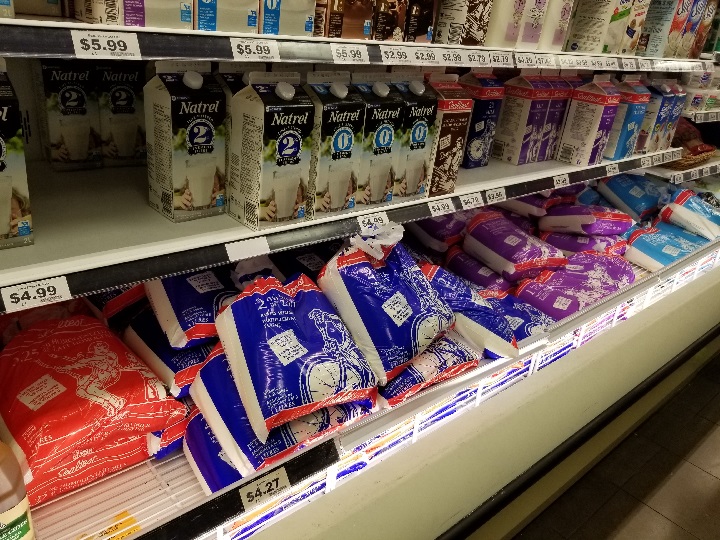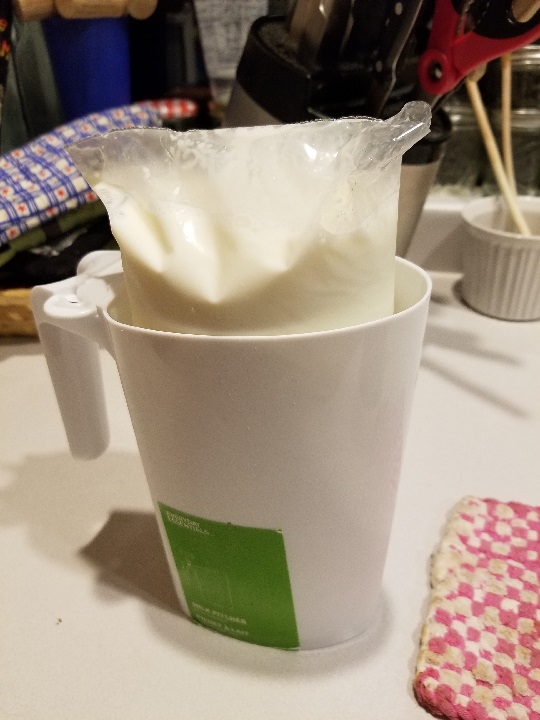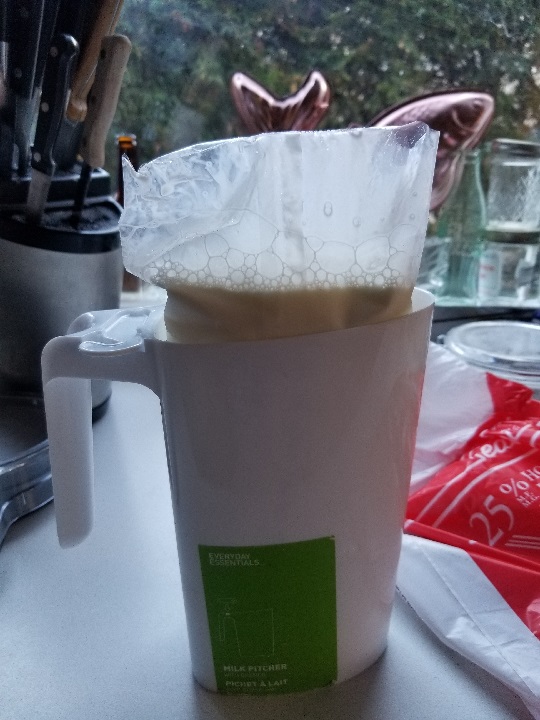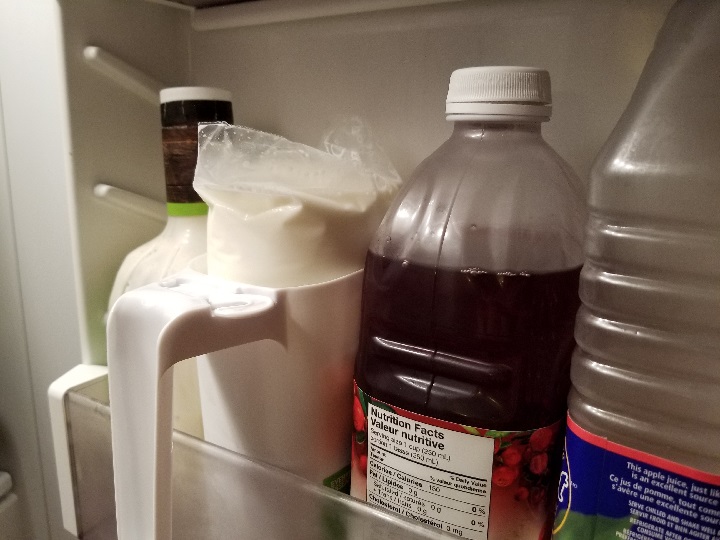When you move from the US to Canada, it’s a fairly minor adjustment, aside from the normal stress of moving house at all. A lot of the chain stores you’re used to are still available – no Kohls or Target (shed a tear for Target, whose Canadian enterprise went spectacularly belly-up), but there’s still Whole Foods and Marshall’s, and Costco even seamlessly accepts your membership card. (Though they do take a different credit card.)
So it’s the little differences that give you a moment’s pause. Why do the kids’ chicken fingers always come with “plum sauce?” Why are ketchup flavored potato chips so popular? Why do Wheat Thins look and taste different from the Wheat Thins back home, even though the box design is identical down to the font? What is the deal with all these tiny cucumbers? How do I deal with milk that comes in bags?

To be clear, you don’t have to buy milk in bags. You can get cartons. But the bags are super convenient! You can buy 4 liters at a go, conveniently split into 3 bags (why 1.33 L is the working unit for milk, I have no idea) so you only need open one at a time, which keeps the others fresher for longer. Also you get to reuse your cute little plastic pitcher.

Although I was totally prepared to embrace the bagged milk phenomenon, I encountered a few snags in execution. For one thing, a new bag of milk doesn’t fit completely into the pitcher – it protrudes, the liquid level sitting ominously atop the rim, looking like a spill waiting to happen.

Through talking to other bagged-milk consumers, I have learned that a crucial part of initial bag installation is the thumping – I thump the pitcher, with the milk bag still sealed (don’t do this after opening!), repeatedly on the countertop until the milk bag settles fully into the pitcher. Otherwise you can get a pocket of air at the bottom.
The milk level will still be above the pitcher’s rim when you start, though. It’s disquieting but you will just learn to have to deal with the dread.
We bought a pitcher with a bag cutter included, because I thought it would be handy. It was not. It chews up the bag, rather than cutting cleanly, and in the process, you get milk splatter everywhere. Now I use scissors to snip the corner. I have talked to other users of bagged milk and everyone has a different recommended angle – some adhere to a rigid 45 degree snip, some do a shallower angle, some deeper. The only way to find out what works for you is through experimentation. I personally find that a shallower angle provides better control.

When I pour, I hold the handle of the pitcher with one hand and pull back on the opposite corner of the bag with the other hand, to keep the plastic nice and taut near the spout area. Otherwise you risk unpredictable folding and drooping of the milk bag during the pour, resulting in a stream of milk that is anything but constant and steady, possibly even missing the target entirely.
I still love it though. Like any new tool, it required an adjustment period at first. But for me the benefits definitely outweigh the drawbacks. And the single bag, in the thin milk pitcher, fits neatly in the refrigerator door.

It should be noted that this bagged milk phenomenon is not universal to Canada. I think I used to see bagged milk when I visited my family in Vancouver as a kid, but it’s been phasing out, and the last few times I was in town everything was cartons and bottles. It might just be an Ontario thing? or even an Ottawa thing? Regardless, I’m definitely embracing it as part of my Canadian experience.
